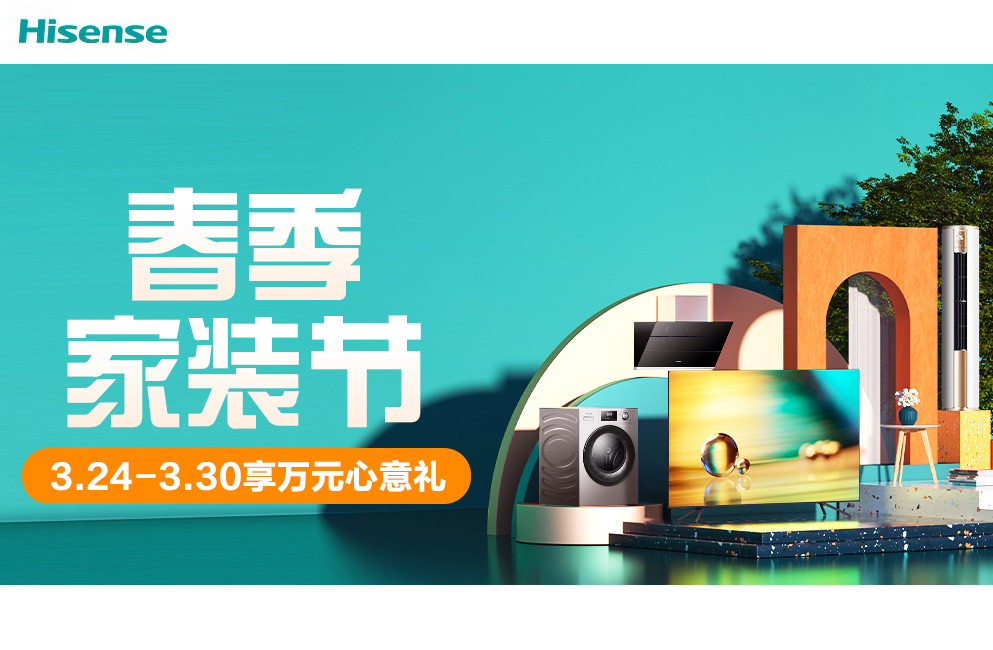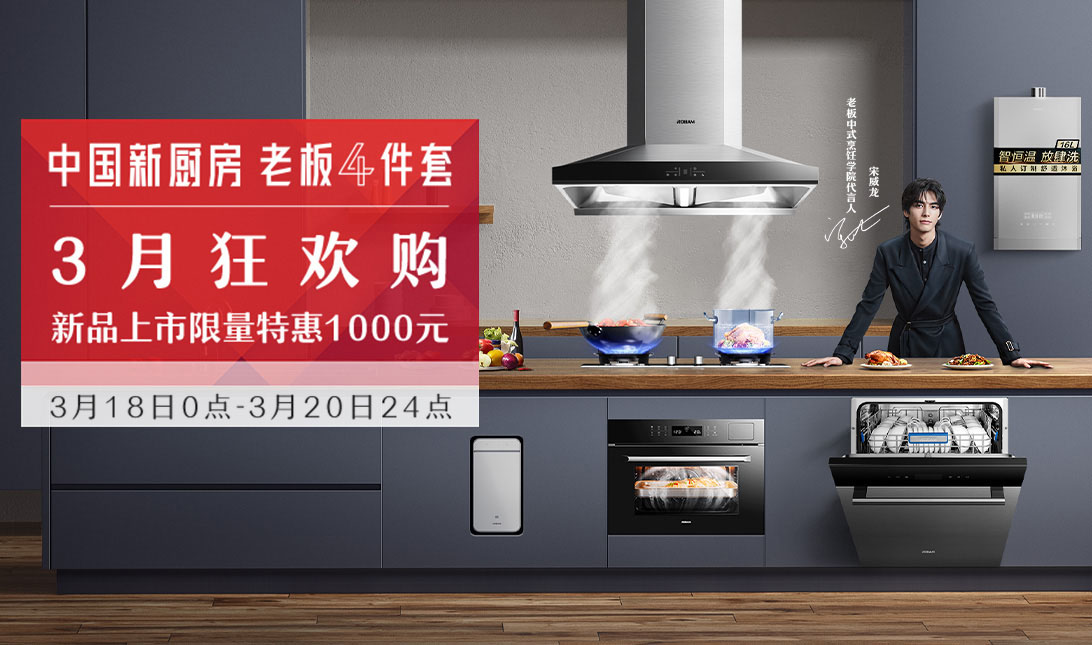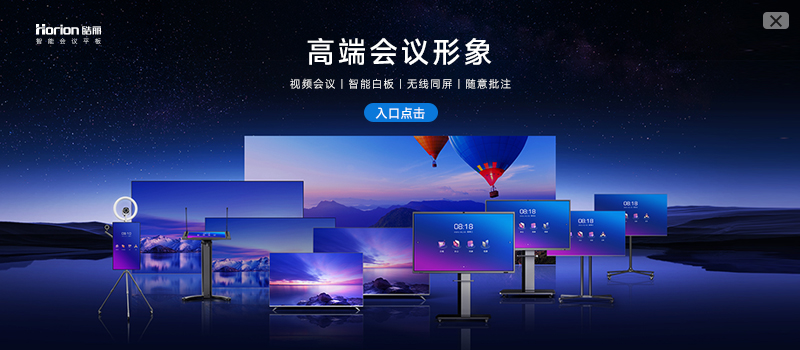In December last year, MediaTek launched a chip Helio P90 that focuses on AI computing power. This product is very interesting. The CPU and GPU performance is at the level of mid tier chips in the industry, but the AI computing power is upgraded to the level of flagship chips.
According to MediaTek, Helio P90 once exceeded Qualcomm 855 and Kirin 980 in AI Benchmark (a professional AI testing agency). Today, on the website of this testing agency, the AI score of smart phones equipped with Helio P90 chips is still among the best.
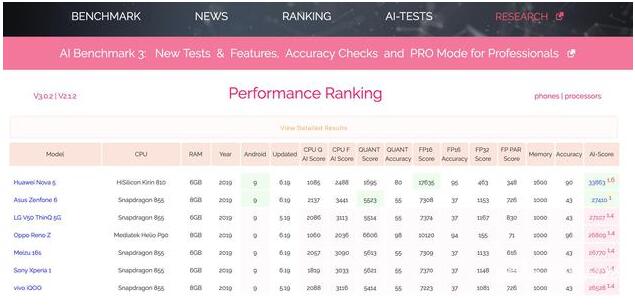
OPPO Reno Z ranked fourth
It has been half a year since the release of Helio P90 chip, and our understanding of this chip is always in the parameter stage. Now the first mobile phone equipped with Helio P90 has been officially released. We also have the opportunity to analyze the performance of this chip through specific mobile phone products.
1、 What kind of chip is this?
At the beginning of the article, we mentioned that Helio P90 is a mid tier chip. Although MediaTek called it "new high-end" at the beginning of the launch of new products, Helio P90 is still a mid tier chip from the perspective of CPU and GPU performance.
From the parameter point of view, Helio P90 adopts the 12 nanometer process, which is far from the most advanced 7 nanometer process. The more advanced manufacturing process means higher performance and lower power consumption. In terms of CPU, Helio P90 adopts the design of 2+6 eight cores, two A75 cores with a main frequency of 2.2GHz and six A55 cores with a main frequency of 2.0GHz. This design and selection of large and small cores mean that the performance of Helio P90 CPU can compete with that of Snapdragon 710.

OPPO Reno Z Rabbit Run
For this reason, we scored one point with OPPO Reno Z, the first mobile phone equipped with MediaTek Helio P90. From the point of view of the running score of Anthuru, the score of 164000 is basically the same as that of Xiaolong 710. This shows that Helio P90 is really the level of mid tier chip in terms of CPU and GPU comprehensive performance.
As we said before, in addition to the CPU and GPU performance, MediaTek focuses on the AI computing of this chip, and completes AI computing through the built-in independent APU module. The concept of APU was first put on Helio P60 chip. In the P90 generation, MediaTek has upgraded it, and its computing power has quadrupled.
So we can see that the P90 has the AI computing power of the flagship chip when the CPU and GPU performance is only at the mid end level. In the case that CPU and GPU are difficult to surpass competitors, MediaTek chooses to bet on AI. We have to admit that this is a new idea that can distinguish us from our competitors and transfer our core competitiveness.
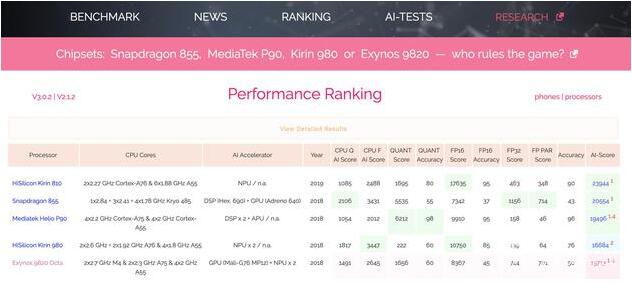
AI performance ranking has changed, and Kirin 810 ranks first
Last week, Huawei released a new generation of mid-range chip Hisense Kirin 810. In this product, we see the same idea as MediaTek Helio P90 - to make the AI computing power of mid tier chips as strong as that of flagship chips. Even after the launch of Kirin 810, the list of AI Benchmark leaderboards has changed.
2、 Apart from looking at the camera, there are algorithms for mobile phone photography
Having said so many things about theoretical parameters, the final chip product will be delivered to specific terminals. The first product equipped with MediaTek Hello P90 chip is OPPO Reno Z, and the specific AI embodiment is on photography.
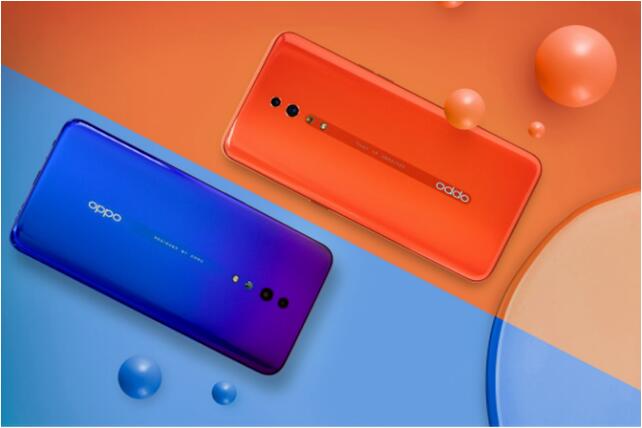
OPPO Reno Z
In the past, when we talked about taking pictures with smart phones, the first element was the camera and sensor. There is no doubt that these hardware are the basis for taking good photos, but the good or bad of a photo is also closely related to the algorithm. Even if the same sensor and lens set are used, each manufacturer will still have different performance in taking photos. The main reason is that the algorithm is different.

Evolution of MediaTek's ISP algorithm
The algorithm is finally handed over to SoC (system level chip, including CPU, GPU, ISP, communication baseband and other modules), of which ISP (image signal processing) plays a crucial role. The sharpening, noise reduction and color of the photos we usually see are all done in the ISP. In addition, it is also responsible for various focusing tasks and methods and algorithms of multi camera system cooperation.
Nowadays, with the deepening of AI concept, some graphics processing tasks are handed over to APU, or NPU, which creates the concept of "AI camera" on smart phones. On smart phones, the part that best reflects AI, or that users can most perceive the role of AI, is photography.
3、 Handset with Helio P90 chip
This time we took some samples with OPPO Reno Z, the first mobile phone equipped with Helio P90 chip. It should be emphasized that the results of the sample display can only represent the photography level of the Reno Z mobile phone. Although SoC plays a key role in the algorithm, the final image quality is still affected by the lens. (Note that the quality of all samples is compressed after uploading)
The main camera of OPPO Reno Z is a 48 million pixel Sony IMX586 sensor. The sensor size is 1/2 and the aperture size is f/1.7. It supports the four in one pixel aggregation technology. The secondary camera is a 5 megapixel depth of field lens, which is responsible for the background virtualization in portrait mode. This dual camera combination means that Reno Z mainly relies on 48 million pixels for main imaging.

Color expressiveness under sufficient light

Proof under sufficient light
In the case of sufficient light, Reno Z's color, sharpness and white balance are all good, and the picture is also transparent enough. When shooting against backlight or strong light, HDR will be automatically turned on. High exposure areas will be suppressed through multi frame synthesis, and low exposure areas will show more details.
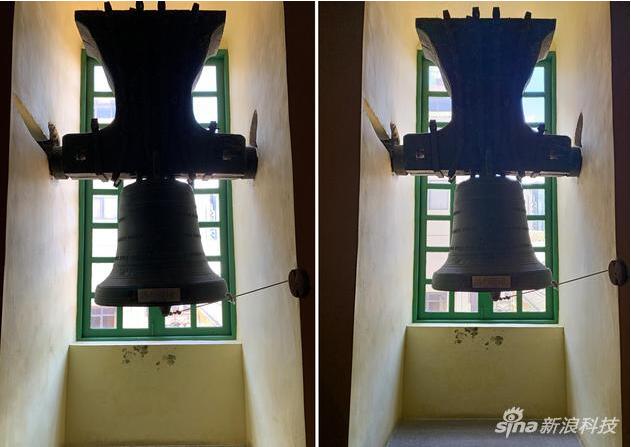 Backlight proof of iPhone XS Max (left) and OPPO Reno Z (right)
Backlight proof of iPhone XS Max (left) and OPPO Reno Z (right)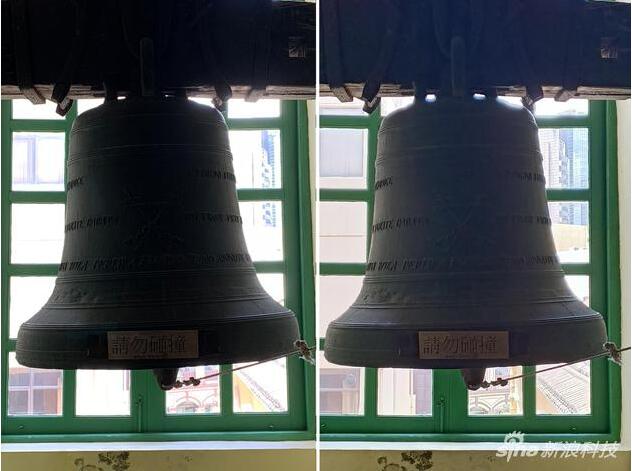 After zooming in, Reno Z has better exposure suppression and more details outside the window, but the light and shade of the clock body surface are not coordinated
After zooming in, Reno Z has better exposure suppression and more details outside the window, but the light and shade of the clock body surface are not coordinated Nowadays, smart phones are equipped with this function in taking photos. Its key point is that it can be turned on at an appropriate time when it is set to automatic, and can bring about visible improvement when it is turned on. Reno Z's proofs not only improve the dark details, but also retain the details of high exposure outside the window. In this respect, the effect is better.

Reno Z portrait mode
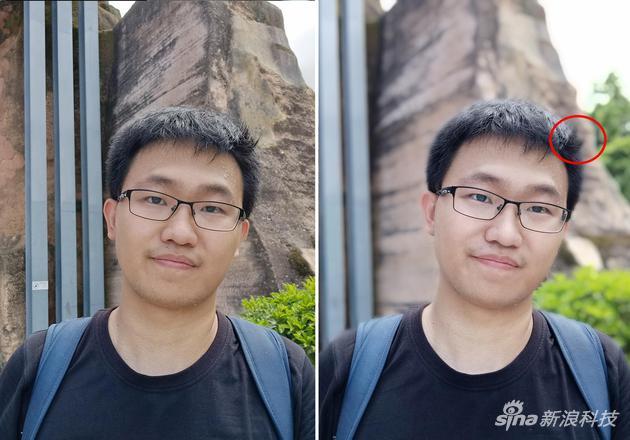 Front camera portrait mode (right) for hair processing
Front camera portrait mode (right) for hair processing In portrait mode, thanks to the main f/1.7 aperture and 5 megapixel depth of field lens, Reno Z's background virtualization effect is hierarchical. The hair details are still handled by smearing and clipping. Distinguishing subject and background, which is our so-called matting, is a common algorithm in SoC image processing. It determines the hierarchical relationship between tasks and background in portrait mode. If this aspect is not handled properly, it will lead to the place that should be virtualized will not be virtualized, but the place that should not be virtualized will be pasted, and the photo will be like the PS failed.
 The dazzle mode (bottom) will improve the brightness of the picture and adjust the colorful green (vegetation in the lower right corner)
The dazzle mode (bottom) will improve the brightness of the picture and adjust the colorful green (vegetation in the lower right corner) Reno Z has a built-in dazzle mode. In this mode, photos will improve the brightness of the image and ensure details as much as possible. If the brightness of the picture itself is enough, it will also deal with dark areas or places with bright colors to improve contrast and saturation. It is more like optimizing the overall picture, rather than simply improving color saturation.
 Reno Z double zoom proof, sky color slightly purple
Reno Z double zoom proof, sky color slightly purple However, due to the camera combination, Reno Z is weaker in zoom. Its 2x zoom mainly comes from the clipping of 48 million pixel photos, and is more persistent about sharpness, which makes the picture look stereoscopic without magnification. But after all, the main picture is clipped instead of optical zoom, and even the algorithm is hard to make up for the hardware regret.
 IPhone XS Max (left) and Reno Z (right) double zoom proof detail magnification
IPhone XS Max (left) and Reno Z (right) double zoom proof detail magnification In low light environment, Reno Z can well suppress dark noise. For noise processing, it largely depends on the chip algorithm. In this regard, P90 shows the advantages of AI computing power in controlling noise.
 OPPO Reno Z can control noise well under low light conditions
OPPO Reno Z can control noise well under low light conditions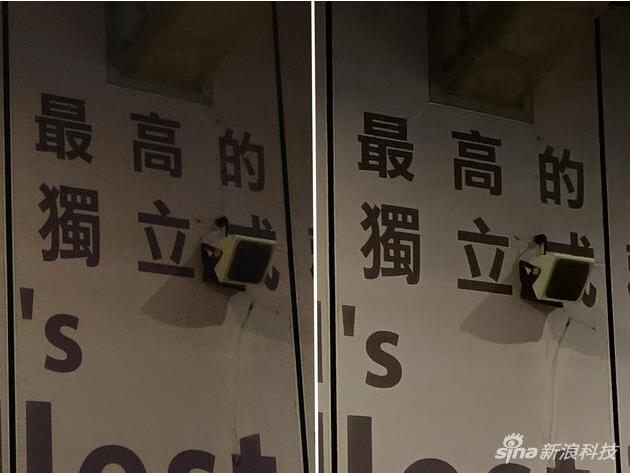 The OPPO Reno (left) and OPPO Reno Z (right) proofs are magnified and compared. Reno has cameras of the same specification as Reno Z, equipped with Snapdragon 710 processor
The OPPO Reno (left) and OPPO Reno Z (right) proofs are magnified and compared. Reno has cameras of the same specification as Reno Z, equipped with Snapdragon 710 processor When the sample is enlarged, you can see that Reno Z has obvious advantages in the brightness of the picture, and the processing of noise in dark areas is smoother.
 Reno Z night proof has advantages in picture brightness
Reno Z night proof has advantages in picture brightness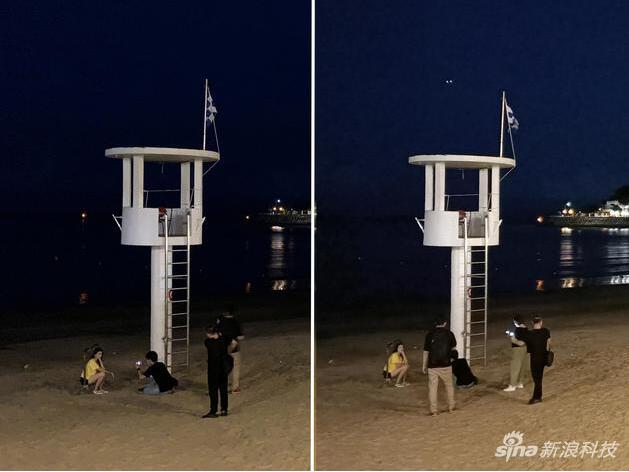 IPhone XS Max (left) and OPPO Reno Z (right)
IPhone XS Max (left) and OPPO Reno Z (right) At the same time, in the night view mode, Reno Z will process the reflection on the water surface to make it look more pleasing. Of course, Reno Z also has a night view mode. After being turned on, it can get brighter pictures and clearer details through long exposure and multi frame composition. This mode has a good inhibitory effect on the high exposure part, rather than blindly improving the brightness of the picture. At the same time, it also optimizes the color of the night scene light.
 Reno Z night scene sample has optimized the reflection on the water surface (the quality is compressed after the image is uploaded)
Reno Z night scene sample has optimized the reflection on the water surface (the quality is compressed after the image is uploaded)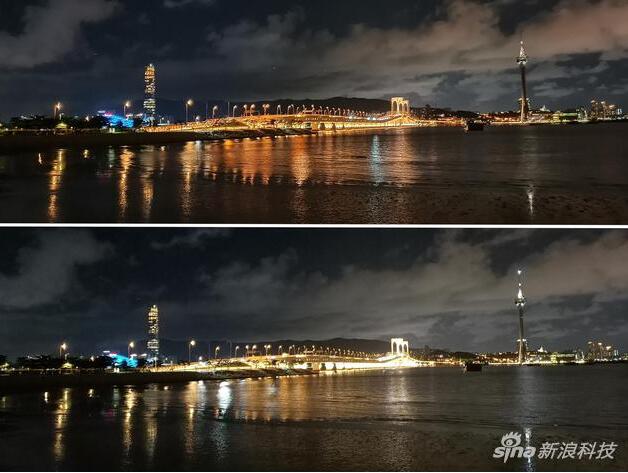
Night view mode (Part 1) can effectively suppress exposure
On the whole, OPPO Reno Z, as a midrange computer, has something to commend, such as the control of noise and the color adjustment of images through AI algorithm. At the same time, due to limited camera configuration, it is not possible to cover multiple scenes such as ultra wide angle, ultra micro distance, or even better telephoto, as the flagship product does, so that the AI computing power of the chip is not fully utilized.
Although SoC is very important for mobile phones to take photos, and AI algorithm can indeed make photos behave differently, this effect is often potential, far less powerful than the propaganda point of "mobile phones that can take pictures of the moon". This makes us often ignore the importance of chips and algorithms when talking about mobile phone photography. From the sample above, we can see that Helio P90 has certain optimization for noise reduction and photo color at night, which is the impact of the algorithm on the final image.
4、 AI is not easy to follow
AI computing power fails to fully demonstrate that it is actually a side effect of chip positioning. Just taking photos, according to the calculation of MediaTek Helio P90, should be able to play a greater advantage. At the beginning of the release of this chip, MediaTek demonstrated the AI color retention, real-time bone recognition, real-time slimming and other functions of a single lens on the spot, but these were not reflected in the first mobile phone equipped with this chip.
For a mid tier chip, manufacturers will naturally consider other parameters when configuring them. The midrange performance positioning means that mobile phone manufacturers will not give the flagship configuration to this product, thus limiting the ability to play. Even if the benchmark test achieved unexpected results, it failed to play its best role in the product. These problems cannot be solved by only one chip supplier, and need the cooperation of mobile phone manufacturers.
So back to the problem that Helio P90 faced when it was just released, although MediaTek chose a path different from other mobile chips, adding flagship AI computing power to the mid tier chips, how to persuade manufacturers and consumers to pay is another matter.
(The image is reproduced to the network. If the original author finds that the use of the image does not meet my wishes, please contact the author of this website or customer service, and delete it as soon as possible)
(Reprinted to the network, only for the purpose of spreading relevant information. If the original author finds that the use of the content does not meet my wishes, please contact the website author or customer service, and delete it as soon as possible)





















